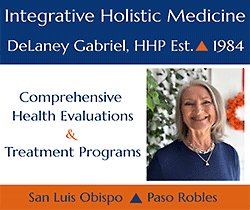Highway 41 corridor to be discussed at Sept. 2 meeting
– The City of Atascadero is inviting residents and visitors to attend a second community meeting on the improvement of the Highway 41 Corridor, to be held at the Pavilion on the Lake, 9315 Pismo Ave., in Atascadero, on Wednesday, Sept. 2, from 6-8 p.m. The purpose of the workshop will be to provide an overview of the project and its status, present a draft vision statement, and gain input from the community. There will also be a discussion about the issues and ideas heard at the last meeting and discuss project concerns. They will present preliminary corridor configuration alternatives and cross sections and solicit input from the community.

The Pavilion on the Lake.
The desired outcomes from this meeting will be to:
• Update the community on project status
• Refine the vision statement
• Refine alternative corridor configurations based on input
• Seek input on applicability of various cross-sections along the corridor
The city is developing a plan for the future of Highway 41 corridor between El Camino Real and San Gabriel Road. The city’s primary goal is to provide connectivity between the downtown and the Lake Park & Zoo. Although the corridor is well connected for vehicles, it is not well connected for pedestrians and bicycles. The study will develop alternatives for use of the public roadway that focus on safety, access to businesses, and provides direction for future street, sidewalk and drainage improvements that impact people, bikes and vehicles.
The overall goal of the project is to prepare preferred street design for segments of the corridor so that when improvements are made, they are well connected and reflect the vision of the community. The planning process for the project is expected to be conducted between now and Dec. 2015, a total of three rounds of public workshops with this being the second of the three. The Highway 41 corridor study project is designed to involve and engage the community, develop a vision for the roadway’s future, assess the existing conditions, analyze opportunities and constraints, develop design criteria, and prepare preferred designs for the roadway segments as well as develop an implementation strategy.
A safe, connected, and convenient corridor could encourage the use of alternative transportation modes and active recreation and provide easy access to businesses and other destinations. Providing choices for how to get around, as well as opportunities for recreation, have become priorities for many communities. An increase in the number of people walking and biking for transportation and recreation has a range of benefits, including some that can be measured, such as improved traffic level of service, reduced vehicle emissions and traffic and parking congestion. Some other benefits include improved public health, an enhanced sense of place and community, connection with nature, and economic development.











